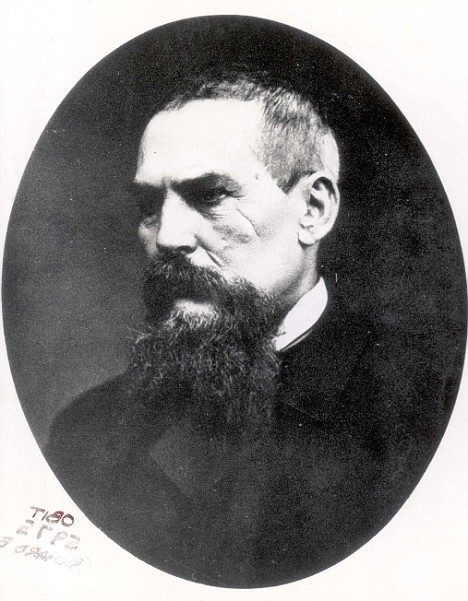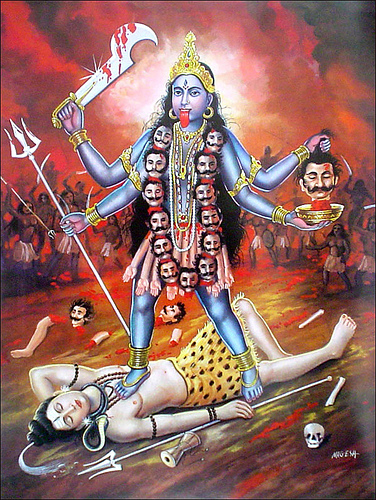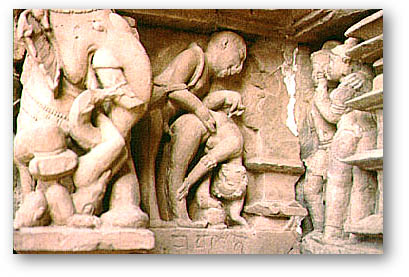Kama Sutra, Tantric Sex and all that!
One of the wonders of the east that always fascinated the Victorian British was the place of sex in Indian culture and society. Rumours of Eastern sexuality became renowned in Britain through the work of one Captain Sir Richard Burton. Not to be confused with the actor who married Elizabeth Taylor, Burton was almost a caricature of a British Army Chap: from a landed family, with legendary moustaches, he was a man who engaged in duels and enlisted in the East Indian Army at the behest of friends, hoping to fight in the Afghan War.
He was a demonic fighter who engaged in single combat with ferocity. But, whilst in India, he took an enormous interest in Indian culture, history and religion. A natural linguist, he became proficient in Hindustani, Gujurati, Punjabi and Marathi. Even though this was a time when the British were much happier to allow their officers to mix with the local populace, even taking wives, Burton went further in his immersion in native culture and became known as The "White Nigger" by some of his less open-minded colleagues.
Burton was always interested in sex and sexuality and he published his translation of the Kama Sutra 1883. It was a shock to Victorian England, where sex was seen as shameful: a terrible necessity that had to endured for reproduction, but was otherwise to be avoided. But in this ancient Hindu lifestyle guide, sensuality was at the centre of life and sex was to be revelled in. It is more than just the act and ways to do, but also how to live and how to prepare for sex.
The Kama Sutra has become symbolic of all that is exotic, passionate, hedonistic and exciting about India. But sexuality in India has always been of a different ilk to sexuality in England. It was free, uninhibited and devoid of the shame that it has been associated with in Britain.
3500 years ago, Hinduism's holiest texts said that sex was about mutual pleasure for husband and wife, and art and literature from 500 BC shows a society as sexually tolerant as any modern European country. The Kama Sutra was written sometime in the first 500 years AD. Supposedly first given to man by Shiva's doorkeeper Nandi, who overheard the God making love to his wife Parvati, it is a text concerning the philosophy of love, sex, desire and seduction, but also a technical manual for giving pleasure to one's partner.
The Tantric school developed around the same time, although its constituent elements such as shamanism, sexual yoga, goddess cults and sacrifice date back to pre-Vedic religious traditions. It is a tradition that is largely in opposition to the strict hierarchy and rules of Vedic Hinduism. They seek to develop a mystical relationship with the Divine by various methods and the breaking of taboos, using prana (divine power) and kama (desire) in every possible way. Yoga developed alongside this school as a way to "yoke" the body to the divine and to subject the body to the control of the will, but is now a contrary philosophy to the indulgences of sensation of Tantra. Much is made of the unity between male and female energies in the universe, Shiva and Shakti. This process is likened to courtship and consummation, hence the employment of ritual sexual intercourse.
The Goddess in Hinduism is usually worshipped as a benign mother figure: Ganga or Parvati. But the Goddesses of Bengali strands of Tantra are incarnations of Kali. They are terrible, frightening female deities and take precedence over the familiar male entities of Vishnu, Shiva and Brahma. They are attended by jackals and ghosts, wear garlands of recently decapitated enemies and have a taste for necrophilia in order to cross boundaries of existence and mock taboos. Their mount is the corpse of their husbands.
Secret rites are conducted, often at places which represent thresholds in life, or are otherwise taboo. These include sensate rites centred around a feast (representing food), sex (representing sexuality and procreation), the charnel or cremation grounds (representing death, release and rebirth) and blood sacrifices (usually animal but on rare occasions, human).
Sexual rites came about as a way to facilitate heightened states of body awareness and from the erotico-mystical practice involving congress with the Yoginis: powerful and predatory Shakti divinities who demanded to be worshipped and fed with offerings of sexual emissions, as well as with human and animal sacrifice. Once these Yoginis were satisfied, they would then incarnate themselves in the bodies of female devotees, who the male devotees would then sexually interact with. The acts of sex became ritualised, as the oral ingestion of sexual fluids and blood were seen to give the devotee direct access to supernatural powers. Energies and desires were awoken and brought to the fore through Tantric sex as a way to access the divine.
The elaborate scenes of group and oral sex illustrated on the walls of the temples of Khajuraho are probably illustrations of these rituals; the guides will certainly tell you that such Tantric acts were played out on the courtyards and ceremonial squares of the temples.
In the west, Tantra was viewed as a "cult of ecstasy": a release of energies, passion and desire through sex. Hedonistic, intense and more akin to ideas of Satanic worship. Among the New-Age gurus who sprung up as the Hippies returned from their adventures, Tantra has come to be seen as the "Sacred Sexuality" or "Spiritual Sex." But these sexual acts were only practised by a minority of sects in India, and then only as a way to attain awareness as a small part of a much larger philosophy concerned with death and transcendence. The sex rites were largely used to generate semen for Tantric fertility rituals. They are far from the faddish cults embraced by Western rock stars which celebrate sex magic, aromatherapy and coitus reservatus. This "pop Tantra" also omit several key elements of real Tantra: the traditional reliance on a guru; extensive meditative practice; traditional rules of conduct - both moral and ritualistic; and the idea that sex is not an end goal in and of itself, but part of a much larger philosophy of existence. It confuses "Tantric bliss" with simple orgasm.
I think neo-Tantra is an example of how the west has often misunderstood India and its traditions: we see an act that holds a certain place in our culture and infer the same must be true of its place in Indian culture. We take aspects of it to improve that act in our culture and in doing so lose many of the intentions of the act. Yoga, meditation, astrology, ayurvedic medicine and Tantra have all been imported to Britain, but often in pared-down forms, where you have the act and the body of the ritual but none of the meaning.
I can't wait to get to India and look at these rituals in their original context. To see what they mean to Indians today and what we in Britain can learn from them. It might be shocking, but it'll certainly be interesting! And maybe I could even learn from Sir Richard Burton: an outsider who came to admire and understand Indian culture as much as any insider, and who introduced new and exciting parts of that culture to his countrymen.





